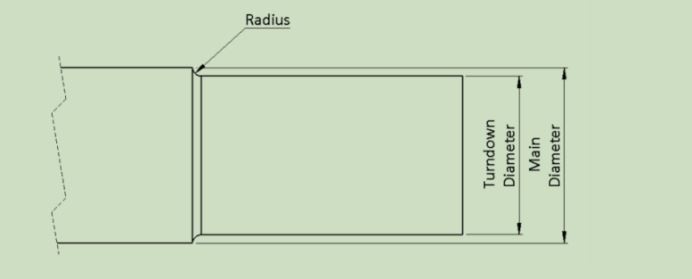 Afrikaans
Afrikaans  Albanian
Albanian  Amharic
Amharic  Arabic
Arabic  Armenian
Armenian  Azerbaijani
Azerbaijani  Basque
Basque  Belarusian
Belarusian  Bengali
Bengali  Bosnian
Bosnian  Bulgarian
Bulgarian  Catalan
Catalan  Cebuano
Cebuano  Corsican
Corsican  Croatian
Croatian  Czech
Czech  Danish
Danish  Dutch
Dutch  English
English  Esperanto
Esperanto  Estonian
Estonian  Finnish
Finnish  French
French  Frisian
Frisian  Galician
Galician  Georgian
Georgian  German
German  Greek
Greek  Gujarati
Gujarati  Haitian Creole
Haitian Creole  hausa
hausa  hawaiian
hawaiian  Hebrew
Hebrew  Hindi
Hindi  Miao
Miao  Hungarian
Hungarian  Icelandic
Icelandic  igbo
igbo  Indonesian
Indonesian  irish
irish  Italian
Italian  Japanese
Japanese  Javanese
Javanese  Kannada
Kannada  kazakh
kazakh  Khmer
Khmer  Rwandese
Rwandese  Korean
Korean  Kurdish
Kurdish  Kyrgyz
Kyrgyz  Lao
Lao  Latin
Latin  Latvian
Latvian  Lithuanian
Lithuanian  Luxembourgish
Luxembourgish  Macedonian
Macedonian  Malgashi
Malgashi  Malay
Malay  Malayalam
Malayalam  Maltese
Maltese  Maori
Maori  Marathi
Marathi  Mongolian
Mongolian  Myanmar
Myanmar  Nepali
Nepali  Norwegian
Norwegian  Norwegian
Norwegian  Occitan
Occitan  Pashto
Pashto  Persian
Persian  Polish
Polish  Portuguese
Portuguese  Punjabi
Punjabi  Romanian
Romanian  Russian
Russian  Samoan
Samoan  Scottish Gaelic
Scottish Gaelic  Serbian
Serbian  Sesotho
Sesotho  Shona
Shona  Sindhi
Sindhi  Sinhala
Sinhala  Slovak
Slovak  Slovenian
Slovenian  Somali
Somali  Spanish
Spanish  Sundanese
Sundanese  Swahili
Swahili  Swedish
Swedish  Tagalog
Tagalog  Tajik
Tajik  Tamil
Tamil  Tatar
Tatar  Telugu
Telugu  Thai
Thai  Turkish
Turkish  Turkmen
Turkmen  Ukrainian
Ukrainian  Urdu
Urdu  Uighur
Uighur  Uzbek
Uzbek  Vietnamese
Vietnamese  Welsh
Welsh  Bantu
Bantu  Yiddish
Yiddish  Yoruba
Yoruba  Zulu
Zulu troughing rolls
Understanding Troughing Rolls in Conveyor Systems
Troughing rolls are a crucial component in the world of material handling and conveyor systems. These specialized rolls are designed to provide support and manipulate the flow of materials on a conveyor belt. Understanding troughing rolls not only enhances the efficiency of material transport but also ensures the safety and longevity of the conveyor system.
What are Troughing Rolls?
Troughing rolls are cylindrical components that form the base of a conveyor system. Unlike flat rolls, which present a level surface, troughing rolls are curved, creating a trough shape. This design facilitates the containment of bulk materials on the belt, preventing spills and wastage during transport. Typically, troughing rolls come in various angles, such as 20, 30, and 45 degrees, allowing for flexibility in the application based on material type and transport requirements.
The Importance of Troughing Rolls
1. Material Containment The primary function of troughing rolls is to contain loose materials. When handling bulk items like coal, gravel, or grain, the trough shape holds materials securely in place, minimizing the chances of spillage and ensuring the effective transport of goods.
2. Reduction of Material Loss Spillage not only leads to wastage of materials but also increases operational costs and reduces efficiency. By using troughing rolls, companies can significantly lower the amount of material lost during transport, leading to enhanced productivity.
3. Efficiency in Handling Troughing rolls allow for increased angle of inclination on conveyors. This capability means that materials can be moved vertically or at steep angles, optimizing space and reducing the footprint of the conveyor system.
4. Reduced Wear and Tear The curved design of troughing rolls distributes the weight of the material more evenly across the belt and the rolls themselves. This distribution results in less stress on the belt and less friction against the rolls, which can reduce wear and extend the lifespan of both the rolls and the conveyor belt.
troughing rolls

5. Versatility in Applications Troughing rolls are employed in various industries, including mining, agriculture, and manufacturing. Whether transporting heavy rocks in a quarry or lightweight grain in an agricultural setting, troughing rolls can be tailored to meet specific operational needs.
Selecting Troughing Rolls
When selecting troughing rolls for a conveyor system, several factors need to be taken into account
- Roll Diameter The size of the roll influences the belt's ability to transport materials effectively. Larger diameters can handle heavier loads but may also increase friction. - Material The construction material of the rolls should match the operational environment. Steel rolls are common in heavy-duty applications, while plastic or rubber rollers may be preferred in lighter applications.
- Roll Spacing The distance between each roll should be determined based on the material being conveyed and the overall length of the conveyor. Proper spacing helps to ensure maximum support and minimizes sag in the belt.
- Angle of Trough Choosing the correct trough angle is vital for handling different materials. A steeper angle can hold more material but may require a stronger belt to counteract the additional stress.
Conclusion
Troughing rolls are an integral part of efficient material handling systems. By understanding their functionality, benefits, and selection criteria, companies can optimize their conveyor systems for better performance, reduced costs, and increased longevity. Whether in a mining operation or a manufacturing facility, the effective design and implementation of troughing rolls can significantly impact the success of material transport undertakings. By investing time and resources into the right troughing rolls, organizations can ensure smooth operations and a competitive edge in their respective industries.
-
Revolutionizing Conveyor Reliability with Advanced Rubber Lagging PulleysNewsJul.22,2025
-
Powering Precision and Durability with Expert Manufacturers of Conveyor ComponentsNewsJul.22,2025
-
Optimizing Conveyor Systems with Advanced Conveyor AccessoriesNewsJul.22,2025
-
Maximize Conveyor Efficiency with Quality Conveyor Idler PulleysNewsJul.22,2025
-
Future-Proof Your Conveyor System with High-Performance Polyurethane RollerNewsJul.22,2025
-
Driving Efficiency Forward with Quality Idlers and RollersNewsJul.22,2025





























